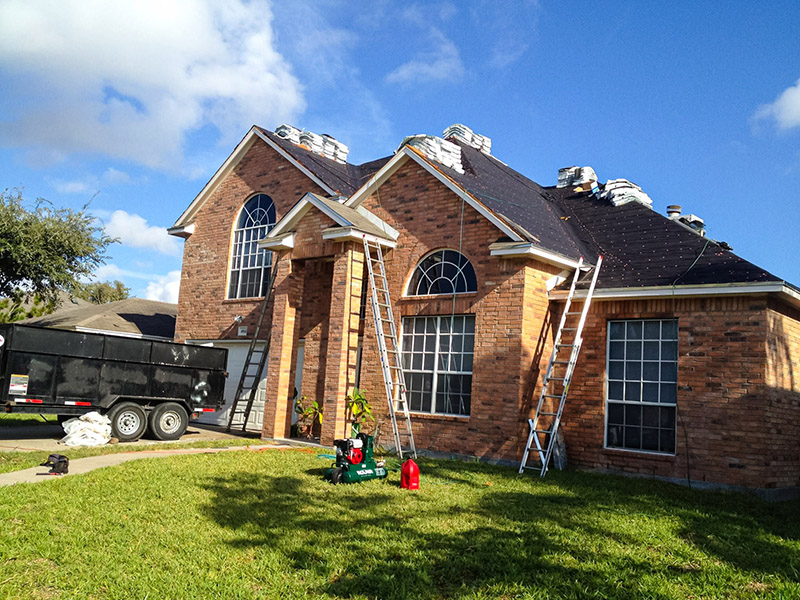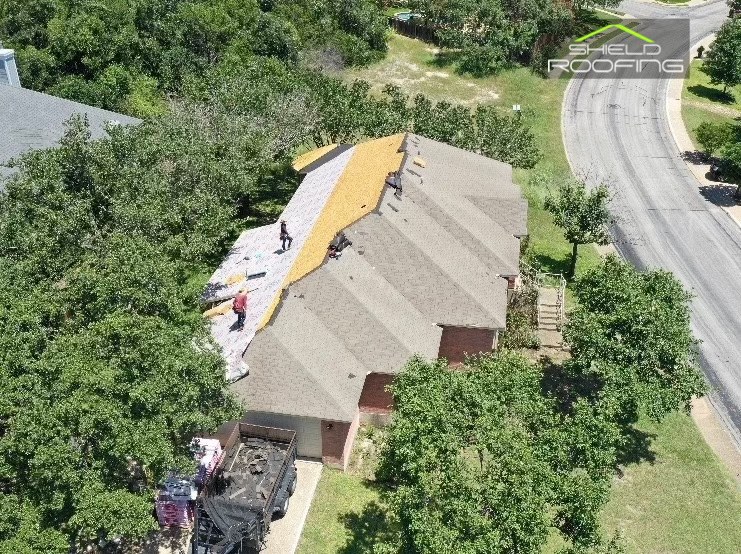Are you thinking about repairing your roof on your own? While the DIY route may seem like a cost-effective option, it can actually be more dangerous than you think. San Antonio’s hot and humid climate can make roofing repairs even more challenging, and without proper knowledge and equipment, you could be putting yourself at risk for serious injuries or even death.
One of the biggest risks of DIY roof repair is falls. Climbing up a ladder and walking on a sloping roof can be incredibly dangerous, especially if you don’t have the proper safety equipment. In fact, falls are the leading cause of death for construction workers, and accidents can happen to anyone, regardless of experience or skill level. Even a small misstep can lead to a serious injury, such as a broken bone or head trauma. So, before you attempt any roofing repairs on your own, it’s important to consider the potential risks and hazards that come with the job.
The Risks of Falls and Injuries
You might think you can handle it, but DIY roof repair in San Antonio can lead to some serious falls and injuries. Climbing up to your roof without proper safety equipment can be a recipe for disaster. A simple misstep can result in a dangerous fall that can cause broken bones, head injuries, or worse.
To avoid these risks, it’s important to take prevention tips seriously. Always wear slip-resistant shoes with good grip, use a sturdy ladder that’s properly secured, and never attempt to work on your roof alone. Additionally, be aware of your legal liability if someone is injured on your property. If you’re not properly trained or equipped to handle a roofing repair, it’s better to leave it to the professionals. Don’t put yourself or others in danger just to save a few bucks.

Electrical Hazards and Safety Concerns
If you’re not careful, you can easily get electrocuted when working on your roof’s electrical system. Electrical hazards are a real concern when it comes to DIY roof repairs. If you’re not familiar with electrical systems, it’s best to leave this task to the professionals. However, if you insist on doing it yourself, there are some safety precautions you can take.
First, always turn off the power before beginning any work. This means shutting off the main circuit breaker that controls the power to your home. Additionally, make sure to wear rubber-soled shoes and gloves to prevent any electrical current from passing through your body. It’s also important to use the right tools for the job, such as insulated screwdrivers. By taking these safety precautions, you can avoid possible electrical hazards and ensure a successful roof repair.
Potential Damage to Your Roof
Watch out for potential damage to your roof caused by weather, fallen debris, and other external factors. Ignoring such damage can lead to bigger problems in the long run, making it important to take immediate action. One major factor that can affect the durability of your roof is the choice of roofing material. While some materials, such as asphalt shingles, are more prone to damage from extreme weather conditions, others such as metal and slate are more resilient and can withstand harsh weather conditions better.
It’s important to take into account the weather conditions in your area when selecting roofing materials. If you live in an area that experiences heavy rain, strong winds, or hail storms, it’s important to choose a material that can withstand such conditions. Additionally, regular maintenance and inspection of your roof can help identify any potential damage before it becomes a major issue. By being proactive and taking the necessary steps to protect your roof, you can avoid costly repairs and ensure the longevity of your roof.
The Benefits of Hiring a Professional
Hiring a professional can provide you with peace of mind and ensure that your roof is properly installed and maintained. While DIY roof repair may seem like a cost-effective solution, it can actually end up costing you more in the long run. A professional roofer has the expertise and equipment necessary to identify and fix any underlying issues that may be causing damage to your roof. They can also ensure that your roof is properly installed, which can prevent leaks and other costly repairs down the line.
In addition to cost effectiveness, hiring a professional can also save you time. DIY roof repairs can be time-consuming and may require you to take time off from work or other responsibilities. A professional roofer, on the other hand, can quickly and efficiently repair or replace your roof, allowing you to get back to your daily routine as soon as possible. With a professional roofer, you can rest assured that your roof will be properly installed and maintained, saving you time and money in the long run.

The Importance of Proper Equipment and Training
Having the right equipment and training is crucial in ensuring a successful and long-lasting roof installation or repair. Going the DIY route may seem cost-effective at first, but it can lead to more expenses and even dangers in the long run. Without proper equipment, you may end up damaging your roof further or even harming yourself in the process.
Moreover, the importance of training cannot be emphasized enough. Professional roofers undergo extensive training to learn about different roofing materials and techniques. They know how to handle the equipment and tools needed for the job, as well as the safety measures to take. Attempting a DIY roof repair without the necessary training can put you at risk of accidents and injuries. It’s best to leave the job to the experts who have the proper equipment and training to ensure a safe and successful repair.
Making an Informed Decision for Your Roofing Project
When planning your roofing project, it’s important to gather all the necessary information and resources to make an informed decision. This means taking into account your budget considerations and the environmental impact of your choices. While DIY roof repair may seem like a cost-effective solution, it can actually end up costing you more in the long run if not done properly.
Before making a decision, consider consulting with a professional roofing contractor who can provide you with a detailed estimate and explain the environmental impact of different roofing materials. They can also advise you on the best course of action for your specific roofing needs. By making an informed decision, you can ensure that your roofing project is completed safely, efficiently, and with minimal impact on the environment.
